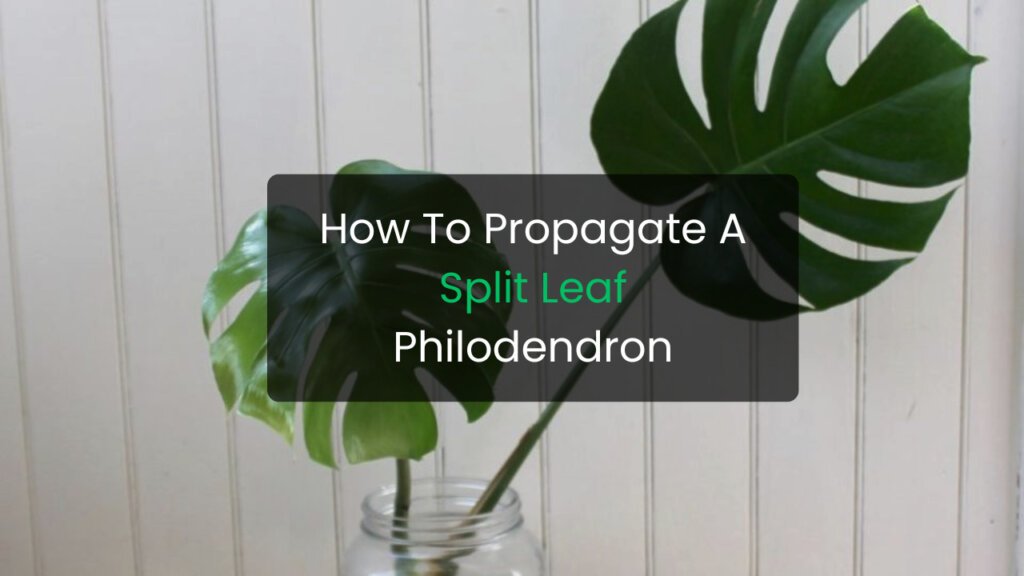Split leaf philodendron, also known as Philodendron bipinnatifidum or tree philodendron, is a popular indoor plant with large, tropical, split leaves. If you love its lush look and want more for your home or to share with friends, propagation is an easy and rewarding method. This guide explains how to propagate a split leaf philodendron using water or soil, along with helpful care tips to ensure success.
Why Propagate a Split Leaf Philodendron
Propagation helps you:
- Grow new plants from a healthy mother plant
- Save money on buying new philodendrons
- Maintain and shape the parent plant
- Expand your indoor garden naturally
This method works best during spring or summer when the plant is actively growing.
Best Methods to Propagate Split Leaf Philodendron
You can propagate this plant in two common ways:
- Stem cuttings in water
- Stem cuttings in soil
Both are effective, but beginners often prefer water propagation because it allows you to watch root growth.
Step by Step: Water Propagation
- Choose a healthy stem with at least one node and an aerial root
Nodes are small bumps on the stem where roots develop. - Use clean, sharp scissors or pruning shears to cut below the node
- Remove lower leaves leaving one or two at the top
- Place the cutting in a glass or jar filled with clean, room temperature water
- Keep it in bright, indirect light
- Change water every week to prevent bacteria
- Roots usually grow within two to four weeks
Once roots are at least two to three inches long, move the cutting to soil.
Step by Step: Soil Propagation
- Prepare a pot with fresh, well draining potting mix
Use a mix with peat, perlite, or coco coir for better aeration. - Dip the cut end in rooting hormone (optional but helpful)
- Plant the cutting into soil, keeping the node buried
- Water lightly and keep soil slightly moist, not soggy
- Place in bright, indirect sunlight
Roots should begin forming in three to five weeks. Gently tug the cutting after a few weeks to check resistance, which means roots are established.
Tips for Successful Propagation
- Use a clean and sharp cutting tool to prevent infection
- Avoid direct sunlight to prevent leaf burn
- Maintain warm temperature and humidity for faster rooting
- Do not overwater after moving the rooted cutting to soil
Common Issues and Fixes
| Problem | Solution |
|---|---|
| Yellowing leaves | Reduce watering, provide indirect light |
| Rotting stem | Remove mushy parts, use fresh water/soil |
| No root growth | Ensure node is included, increase humidity |
Expected Growth Timeline
| Time | Stage |
|---|---|
| 1 to 2 weeks | Root emergence |
| 3 to 4 weeks | Visible healthy roots |
| 2 months | New leaves appear |
Related Keywords (LSI and NLP Terms)
Philodendron care, houseplant propagation, indoor plant cutting, tropical plant growth, garden propagation, root development, water rooting, soil rooting, aerial roots, plant nodes, indoor gardening guide
Entities Included
Philodendron bipinnatifidum, split leaf philodendron, Monstera confusion note, indoor plant, propagation method, tropical foliage plant
FAQs
Can I propagate a split leaf philodendron without a node?
No, nodes are required because roots only grow from nodes, not leaves or stems alone.
How long does it take for roots to grow in water?
Roots usually appear within two to four weeks depending on light and temperature.
Should I use rooting hormone?
It is optional but helps speed up root growth and increases success rate.
Can I propagate a split leaf philodendron from a leaf?
No, a leaf alone will not grow roots or new plants. You must have a stem with a node.
Which method is better, water or soil?
Both work well. Water propagation is easier to monitor, while soil propagation avoids transplant shock.





